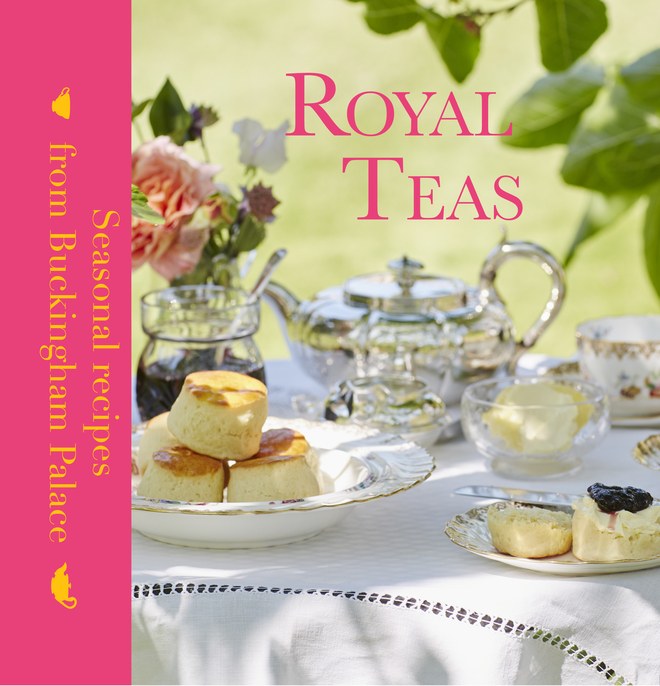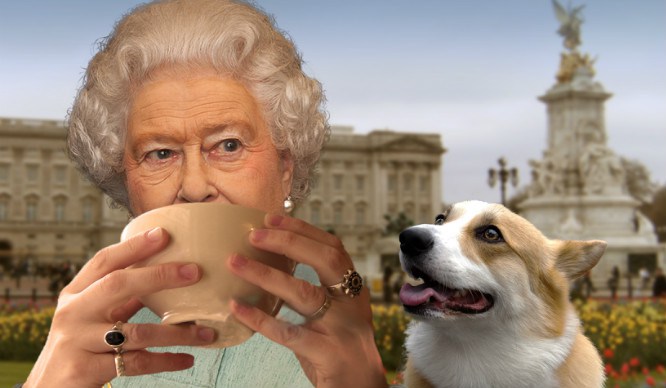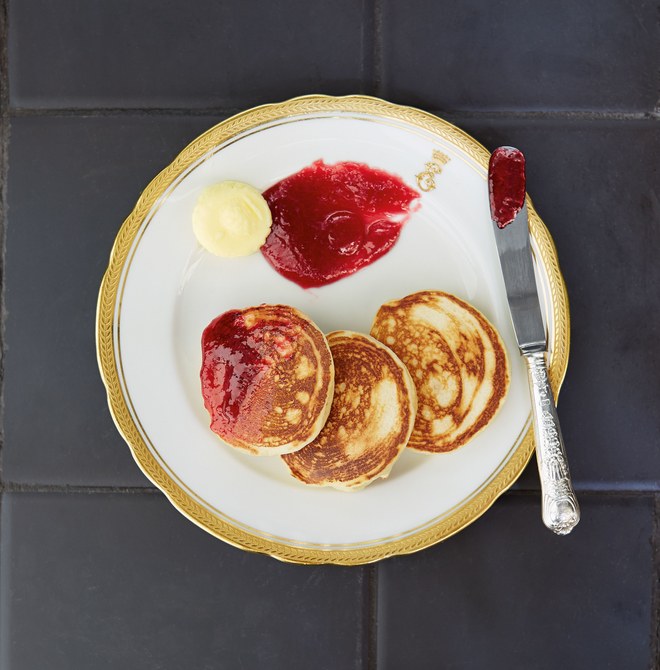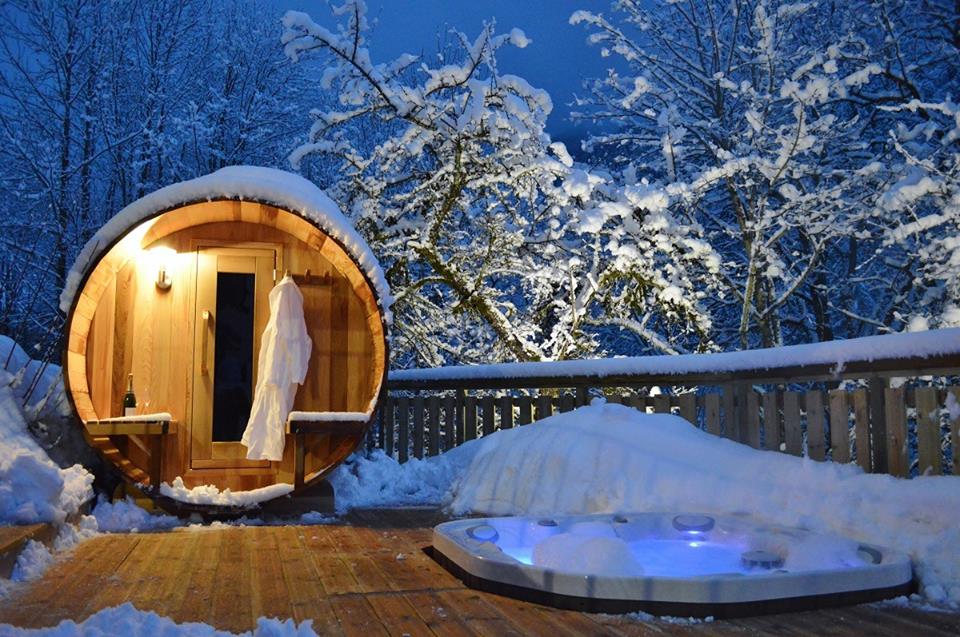3 Recipes from Buckingham Palace’s Very First Teatime Cookbook…!
Enjoy…!
Have you ever wondered what it would be like to have tea with the queen? If you answered “yes,” you’re about to get one small step closer to realizing your dream.
Next month, the Royal Collection Trust is publishing the palace’s first-ever official teatime cookbook, Royal Teas: Seasonal Recipes from Buckingham Palace. The book is written by Royal Chef Mark Flanagan, who has been serving traditional tea services at the queen’s residence for more than a decade.

And as the follow-up to his earlier tome, A Royal Cookbook: Seasonal Recipes from Buckingham Palace, it certainly does not disappoint.

Photo: Courtesy Royal Collection Trust/ © Her Majesty Queen Elizabeth II 2017
Below, three excerpted recipes that Her Majesty herself might have enjoyed. From Drop Scones (a known favorite) to Victoria Sponge (named after Queen Victoria), you’ll be dining in high style in no time.
Victoria Sponge
Another wonderful way to show off homemade jam. Queen Victoria is known to have had a sweet tooth, and this light but delicious cake was named in her honor.
Ingredients
For the Victoria sponge
3 free-range eggs
150 g (3/4 cup) unrefined castor sugar
150 g (2/3 cup) unsalted butter, softened
150 g (1 1/4 cups) self-rising flour, sieved
1/2 tsp. of vanilla essence
For the vanilla buttercream
150 g (2/3 cup) unsalted butter, softened
220 g (1 3/4 cups) icing sugar, sieved
1/3 split vanilla pod
Homemade Strawberry Jam
Equipment
Two 20-cm or 8-inch Victoria sponge cake tins

To make the Victoria sponge
-
Preheat the oven to 180 degrees Celsius (350 degrees Fahrenheit, gas mark 4).
-
Prepare the cake tins by greasing with butter and lining the bottom with a circular piece of baking paper. Leave to one side until required.
-
Cream together the castor sugar, vanilla essence, and softened butter in a bowl until light and fluffy. Gradually add the beaten eggs, a little at a time to avoid the mixture curdling. Finally, fold in the sieved flour until all the ingredients are perfectly combined.
-
Divide the cake mix evenly between the two prepared cake tins and carefully smooth the mix to create two level layers. Place on the middle shelf of the preheated oven and bake for approximately 20 minutes or until the cake appears golden brown and an inserted skewer comes out clean. Once baked, remove from the oven and allow to cool slightly before turning the cakes out on a wire rack.
To make the buttercream
Cream the softened butter with the sieved icing sugar and the seeds from the split vanilla pod. The buttercream will become pale and fluffy with little flecks of vanilla seeds throughout.
To assemble the Victoria sponge
-
Once the cakes have completely cooled, carefully and evenly spread a layer of buttercream on top of the first cake. Next add a thick layer of your homemade jam, before carefully placing the second cake on top of the jam and very gently pressing down. Finally, dust the top of the cake with icing sugar.
-
Serve with a pot of tea!
Her Majesty’s Recipe for Drop Scones, c. 1960
Photo: Courtesy Royal Collection Trust/ © Her Majesty Queen Elizabeth II 2017
This type of small pancake, dropped on a hot griddle to cook, has a place in almost every cuisine in the world. The drop scone, or Scotch pancake, is very similar to American breakfast pancakes and can be eaten with melted butter, spread with jam, or served with maple syrup—all are equally good!
Ingredients
1 free-range egg
2 T unrefined castor sugar
1 tsp. unsalted butter, melted
250 ml (1 cup) full-fat milk
1 tsp. bicarbonate of soda
240 g (1 7/8 cups) plain flour
2.5 tsp. baking powder
1.5 tsp. cream of tartar (in the U.S., you can substitute baking powder for both this and the bicarbonate of soda)
100 g (1/2 cup) clarified unsalted butterEquipment
Pancake griddle or non-stick frying panInstructions
-
In a mixing bowl, sieve together the dry ingredients: flour, bicarbonate of soda, cream of tartar, and sugar. Add to this the milk and egg and whisk to a smooth batter, finally adding the warm melted butter. Pass through a sieve to get rid of any lumps and, if necessary, thin with more milk. The batter should have a dropping consistency but remain thick enough to retain its shape on the griddle.
-
Heat the griddle (or frying pan) over a medium heat and grease with clarified butter. Using a dessert spoon or small ladle, carefully pour spoonfuls of the batter on the griddle. After one side has cooked, flip the scones with a palette knife to cook the other. Once you feel more confident you can cook a few scones at a time, being careful not to let them overcook on either side.
-
Serve warm with butter and homemade preserves.
Carrot Cake

Photo: Courtesy Royal Collection Trust/ © Her Majesty Queen Elizabeth II 2017
This is a dark, spicy cake, deliciously moist and very moreish.
Ingredients
2 small free-range eggs
105 g (1/2 cup) dark brown sugar
105 g (1/2 cup) soft brown sugar
150 g (1 1/8 cups) wholemeal flour
1/4 tsp. salt
1/2 tsp. bicarbonate of soda
1/2 tsp. ground nutmeg
1 tsp. ground cinnamon
35 g (1/8 cup) sour cream
105 g (3/8 cup) sunflower oil
180 g (3 cups) carrots, grated
45 g (1/2 cup) desiccated coconutFor the cream cheese topping
110 g (1/2 cup) full-fat soft cream cheese
50 g (1/4 cup) unsalted butter
50 g (1/3 cup) icing sugar
Juice of 1/2 lemonEquipment
18-cm or 7-inch cake tinInstructions
-
Preheat the oven to 170 degrees Celsius (325 degrees Fahrenheit, gas mark 3).
-
Prepare the cake tin by greasing with butter and lining the bottom and sides with baking paper. Place the lined tin on a flat, heavy-duty baking tray and leave to one side until required.
-
Whisk together the eggs, sugars, and sunflower oil in a bowl until thoroughly mixed. In a separate bowl, sift together the flour, salt, bicarbonate of soda, and spices. Fold the dry ingredients into the egg mix until all ingredients are combined evenly. Finally, fold in the grated carrots and sour cream.
-
Pour the carrot cake mix into the lined cake tin. Place on the middle shelf of the preheated oven and bake for approximately 35 minutes, or until the cake springs back when touched. Once baked, remove from the oven and allow to cool on a wire rack.
For the cream cheese topping
Sift the icing sugar into a bowl and add the softened butter. Beat well until light and fluffy. Add the cream cheese and continue beating until a smooth consistency is achieved. Finally, slowly add the lemon juice whilst still mixing.To assemble the carrot cake
Once completely cool, remove the carrot cake from the cake tin and place on your desired serving plate or cake stand. Using a palette knife, carefully smooth the cream cheese topping evenly across the top of the cake.Excerpt courtesy of the Royal Collection Trust / © Her Majesty Queen Elizabeth II, 2017
-
-
source : Vogue
http://www.vogue.com
Photos: Courtesy Royal Collection Trust/ © Her Majesty Queen Elizabeth II 2017
Big Thanks !







No Comments